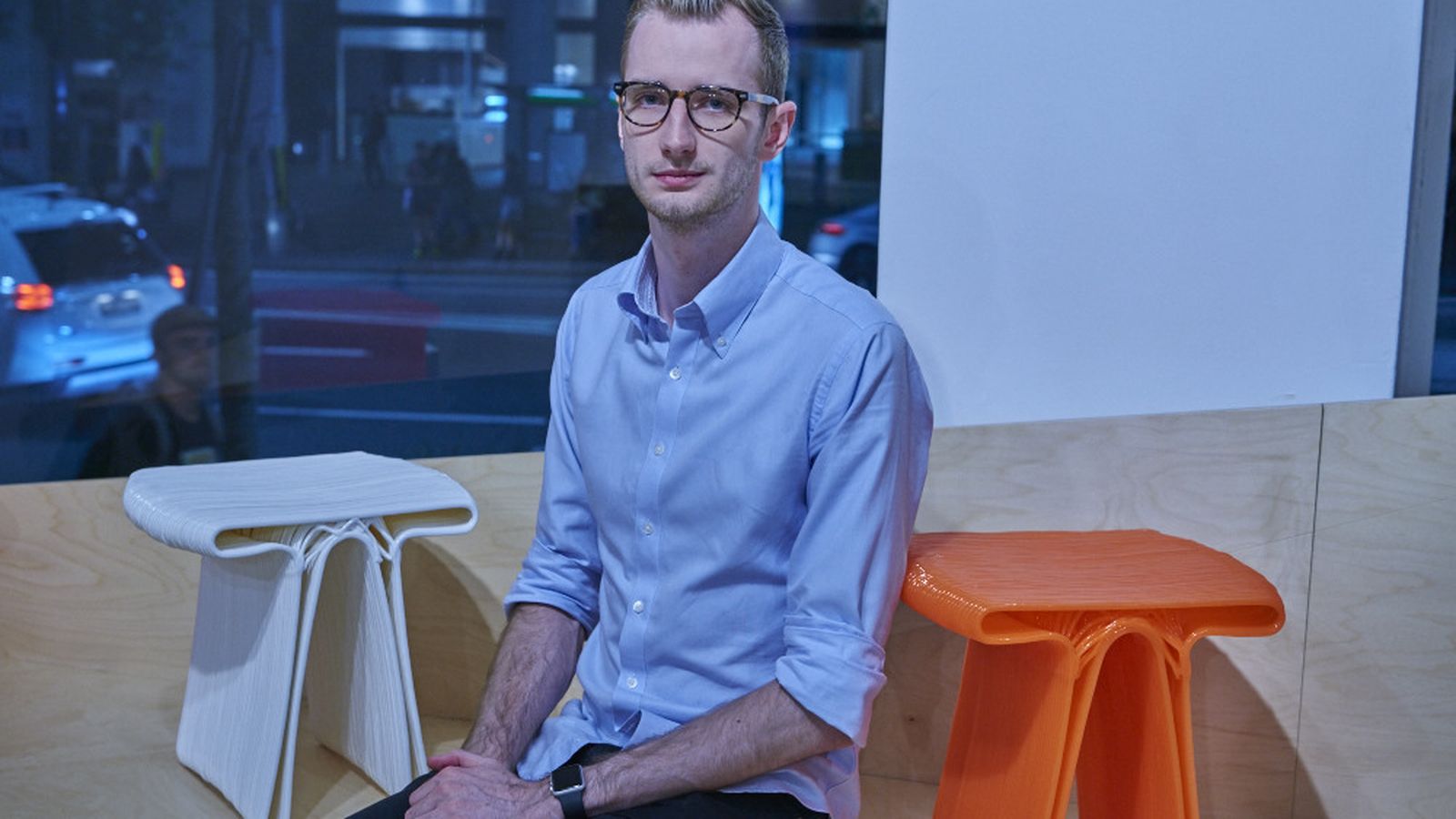Our exhibition Shapeshifters: 3D Printing the Future includes the colourful Percy Stools by Melbourne-based furniture maker Ryan Pennings. We interviewed Ryan about his experiences with 3D printing and plans to make his own spaceship in the future.
ADC exhibition Shapeshifters: 3D Printing the Future includes the colourful Percy Stools by Melbourne-based furniture maker Ryan Pennings. We interviewed Ryan about his experiences with 3D printing and plans to make his own spaceship in the future.
ADC: All of us here at the Australian Design Centre are excited about your bright and cheerful yet wonderfully practical Percy Stools and that they can be printed in 90 minutes. What is it about 3D printing that excites you?
Ryan Pennings: 3D printing lets me make things very quickly. When I was designing the stools, I was able to come up with an idea and have it finished within two hours. That’s something that allows you to do a lot more than you can with more conventional methods of production. On top of that, 3D printing is such a different process, it’s exciting to explore what is possible.
ADC: How would you describe your process of designing and then making?
Ryan Pennings: My process is very experimental, the designing and making process are meshed together, one isn’t possible without the other. There are lots of bad processors to the Percy Stools, and that’s important, I learnt a lot from what didn’t and what did work.
ADC: How you ended up 3D printing?
Ryan Pennings: I was introduced to 3D printing in my 2nd year of university by Scott Mayson and Nigel Brockbank (my lecturers), in this design studio [class] we built 3D printers and then designed products that utilised them. We ended up building the printers for most of the time, and only spent 3 weeks designing, and it was probably the hardest semester of uni for me. But it built a strong foundation and passion for 3D printing that led to me where I am now.
ADC: What was the first thing you printed in 3D?
Ryan Pennings: The first thing I successfully 3D printed was a ring (http://www.thingiverse.com/thing:45973), I watched the the whole thing print, which took about 90minutes as well. I remember feeling absolutely amazed that I could build something in my room like that. I still keep the ring on my desk as a little memento.
ADC: Do you have any stories of when your 3D printing hasn’t gone to plan?
Ryan Pennings: There’s plenty of them. Those moments were very frustrating! Mostly related to the printer not working, and having to fix it again and again. Thankfully the most catastrophic thing that happened was the print turning into a giant blob of plastic on the nozzle. I’ve also crashed the robot into a freshly finished stool…
ADC: There is a wonderful animation of the algorithm of your stool on your website. How does someone get from concept to that?
Ryan Pennings: Thanks. It was a lot of experimentation, and lots of late nights. There’s so many options with algorithmic design and 3D printing that it was very hard to narrow it down in the beginning. Once I have settled on the actual algorithm it was a matter of fine tuning its settings, which meant running it over and over, and occasionally printing a result. The thing with the algorithm is it actually takes longer to generate than it does to print the stool. I’m working on improving that so it can be generated in seconds instead of hours.
ADC: What are you working on next?
Ryan Pennings: I’m looking at setting up a product design studio that works at the intersection of robotic fabrication and algorithmic design. They provide some unique opportunities for designers, including the ability to manufacture locally. Expect some new exciting products in that space! I’m also reviving an old project where I was 3D printing candy. I’m particularly keen to get the robot 3D printing champagne flutes in favoured candy for events.
I’ll also be teaching a studio at RMIT that has students designing for robotic fabrication, I’m looking forward to seeing what they come up with.
ADC: What’s your fantasy 3D object to make? House, boat?
Ryan Pennings: I’d love to 3D print a spaceship.. but I think that’s more than a few years away.
ADC: Who are your design heroes?
Ryan Pennings: I’ve never really idolised any designers, so I don’t think I can answer that question.
ADC: Any other anecdotes or things you’d like to share?
Ryan Pennings: I think it’s very important to remember that as designers we’re still designing products, design is about people. It’s easy to forget about this when you’re caught up with exciting new technology and processes, I’ve had to remind myself of that a few times.
You can find more about Ryan Pennings here and more about Shapeshifters: 3D Printing the Future link here
Interview by Alix Fiveash, Partnerships and Communications Manager

